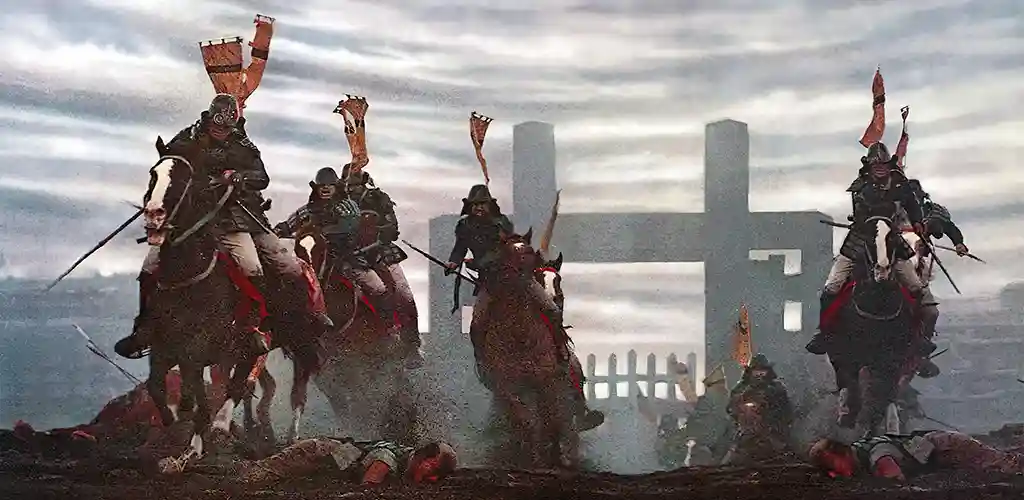Japan Travel Books & Shows
A Beginner's Guide to Japan — by Pico Iyer

Pico Iyer's seminal Video Night in Katmandu jump started backpacker travel to Asia in the 1990s. Insightful, humorous, and compassionate . This is his newest book, of the 15 he has written, was published in 2019. Pico Iyer has made Japan his home for more than three decades living with his Japanese spouse. Iyer is the first to admit Japan remains an enigma not only for travelers, but even to its long-term residents as himself. In A Beginner’s Guide to Japan, Iyer draws on his years of experience—his travels, conversations, readings, and reflections—to craft a playful and profound book of surprising, brief, incisive glimpses into Japanese culture. He recounts his adventures and observations from his life there, presented a compendium of oddities and insights of Japanese life, guaranteed to pique the interest and curiosity of those who don’t know Japan—and to remind those who do of its myriad fascinations. Also see Iyer's Among the Living and the Dead of Angkor Wat about his 2001 visit to Siem Reap and Angkor.
Lost Japan — by Alex Kerr

Since its original publication in 1993, Lost Japan by Alex Kerr has stood within the ranks of the more revelatory and nuanced works in a long line of publications unpicking the seeming exoticism and essential unfamiliarity of Japanese history and culture. Like many who have spent long periods in Japan, Kerr has a distinct conflict of emotions regarding the country he now calls home, and his writing frequently lays this bare. On the one hand he expresses impassioned admiration and praise for the native culture, while on the other he suggests a thinly veiled sense of disapproval for what he sees as the modern Japanese disregard for their past. This reprimand sets the tenor of the book and seems to be directed at a largely apathetic urban Japanese audience which the author feels needs reminding of its nation’s origins. As acknowledged by the author in his prelude, Lost Japan was intended for the Japanese reader (it was first published as Utsukushiki nihon no zanzō, Last Glimpse of Beautiful Japan), with the translation and publication for western audiences somewhat of an afterthought; as a non-Japanese reader I did indeed feel a little outside of his focus at times, but nevertheless found the themes and subject matter stimulating and compelling. (U.K. Japan Society)
Tokyo Travel Sketchbook — by Amaia Arrazola
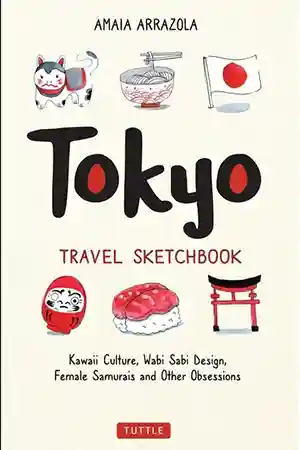
Tokyo Travel Sketchbook is a wonderful graphic novel and cultural primer on Japan for older teens and young adults (some adult content). Amaia went to Tokyo on an artist's grant in 2017 and this is a visual diary of that month-long stay in Tokyo. Her diary is refreshing for entries and sketches as seen by a complete beginner of Japanese culture. Topics cover a wide range from architecture, transportation food (below), religion and the arts.
"Wabi-Sabi. During the time I spent there, I noticed there were two kinds of Japan: two sides of the same coin. The megamodern, supertechnological Japan of neon, fluorescence, Harajuku and Akihabara districts, video games... coexists with the Zen Japan of tradition, ceramics, gardens, contact with nature, patience, silence... Within the latter I found Wabi Sabi, a term defining the beauty of imperfect things, things that are modest, humble, and unconventional." Highly recommended for younger travelers.
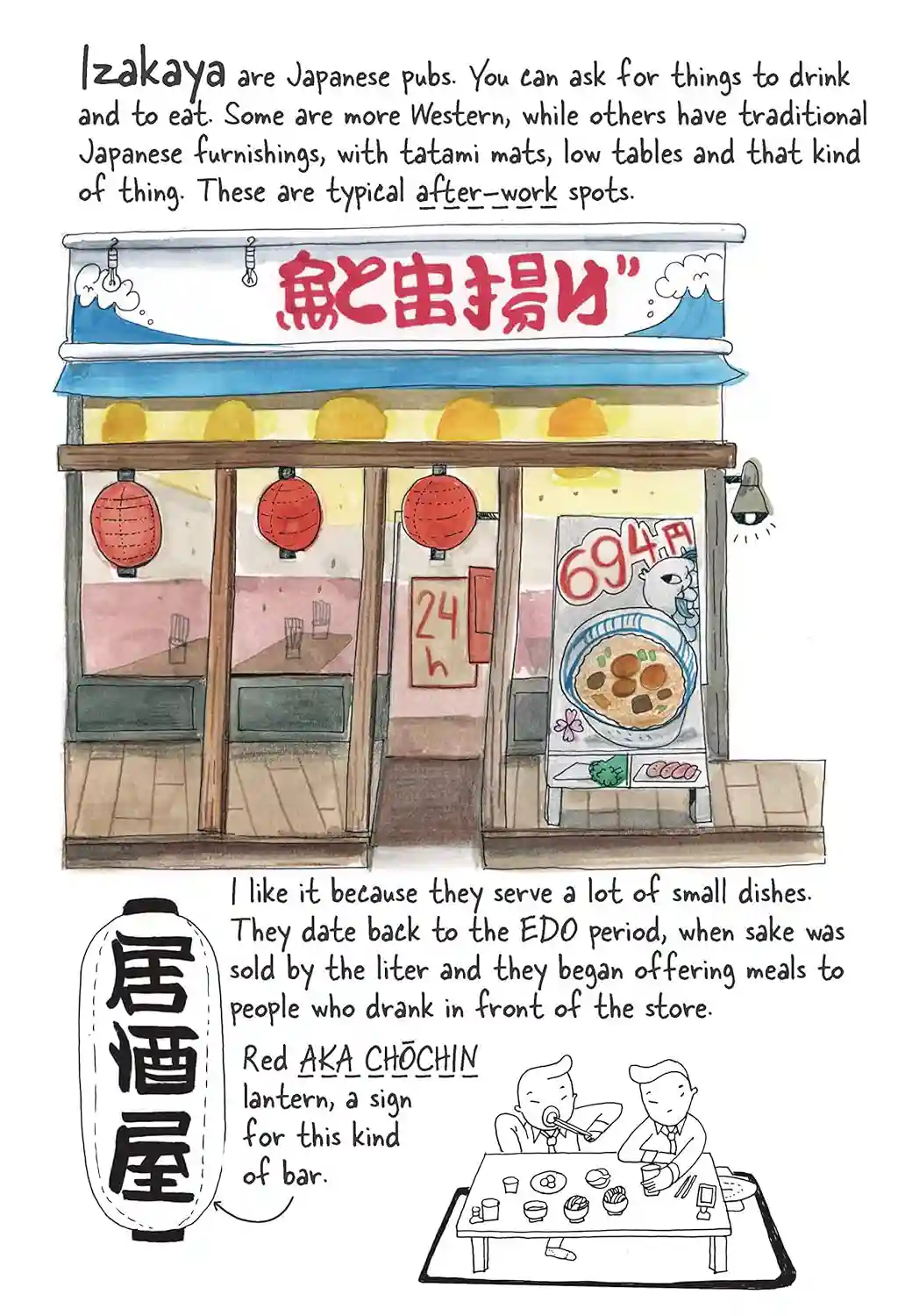
The Thousand Autumns of Jacob de Zoet — by David Mitchell

An engaging historical novel set during a period of Japanese history known as Sakoku, when the Dutch held a seminal trading concession with Japan in the late 18th century. The year is 1799, the place is Dejima in Nagasaki Harbor—the Japanese Empire’s single port and sole window onto the world, configured to keep the West at bay. To this place of devious merchants, deceitful interpreters, and costly courtesans comes Jacob de Zoet, a devout young clerk who has five years in the East to earn a fortune of sufficient size to win the hand of his wealthy fiancée back in Holland. But Jacob’s original intentions are eclipsed after a chance encounter with Orito Aibagawa, the disfigured midwife to the city’s powerful magistrate.
One of my favorite books set in Asia. Mitchell's descriptions of a primitive Japan still closed to the world are vivid and personalities capture the Japanese character in full — Patrick Morris, Indochina Travel
More about The Thousand Autumns of Jacob de Zoet: NYT Review by David Eggers
Pachinko — by Min Jin Lee
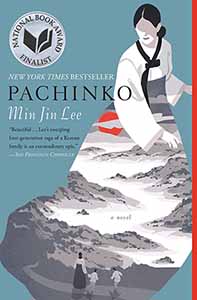
An epic multi-generational historical fiction saga following a Korean family who immigrates to Japan. The arc of history is woven in themes throughout the story from Japan's colonization of Korea: World War II in East Asia, faith, family bonds, love, to the changing identity of women in Japanese society. Encompassing almost a century, the novel traverses from early 20th-century Korea to pre- and postwar Osaka, culminating in Tokyo and Yokohama.
Commanding authenticity stems from Min Lee's meticulous research, vividly breathing life into various settings, from a coastal fishing village in early 20th-century Korea to the humble and worn-down Korean township of Ikaino in Osaka. Intimate and humanizing details make vivid the struggles of a people seeking their rightful place in the world. Immersive and evocative, Pachinko stands as a heartfelt tribute to a people often overlooked by history's erasing hand. The million-copy bestseller has won numerous awards.
Kafka on the Shore — by Haruki Murakami

Japan's most popular and controversial "cult" author. Many of Japan's top books feature metaphysical themes and this is one of the best. Like a favorite songs or poem, the subject and storyline are less important than the grandly surreal scenes and imaginative prose Murakami crafts. An endless string of mesmerizing events are weaved into a unique metaphysical world Murakami creates is often bizarre but intensely creative. The odd chapters in Kafka on the Shore tell the story of a teenager of the same name who runs away from his father's house to escape an Oedipal curse and to embark upon a quest to find his mother and sister. The narrator, Kafka Tamura, recounts his journey out of the real world and into his own interior, along the shores of consciousness. Highly recommended for young adults.
Comments: Most readers prefer Murakami's other popular novel, Hard-Boiled Wonderland and the End of the World. His newest book, The City and Its Uncertain Walls, was released in 2023.
Memoirs of a Geisha — Arthur Golden
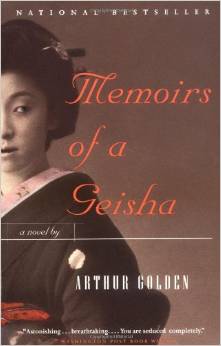
The classic bestseller. From Amazon: "Speaking to us with the wisdom of age and in a voice at once haunting and startlingly immediate, Nitta Sayuri tells the story of her life as a geisha. It begins in a poor fishing village in 1929, when, as a nine-year-old girl with unusual blue-gray eyes, she is taken from her home and sold into slavery to a renowned geisha house. We witness her transformation as she learns the rigorous arts of the geisha: dance and music; wearing kimono, elaborate makeup, and hair; pouring sake to reveal just a touch of inner wrist; competing with a jealous rival for men's solicitude and the money that goes with it. In Memoirs of a Geisha, we enter a world where appearances are paramount; where a girl's virginity is auctioned to the highest bidder; where women are trained to beguile the most powerful men; and where love is scorned as illusion. It is a unique and triumphant work of fiction — at once romantic, erotic, suspenseful — and completely unforgettable."
Arguably most reader's favorite book on Japan.
Convenience Store Woman — by Sayaka Murata
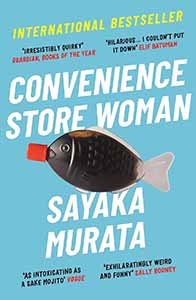
Japan's most popular young writer. A quirky, darkly comical story of a young woman who has worked in the same convenience store for 18 years. A breezy read, but insightful look into Japan culture from an insider's perspective. An ironic and keen examination of Japanese modern work culture and the ubiquitous pressure to conform, accompanied by a delightful and entirely unique portrayal of an unforgettable protagonist whose inner thoughts comprise most of the book:
"Until now, my body had belonged to the convenience store, even when I wasn't working. Sleeping, keeping in good physical shape, and eating nutritiously were all part of my job. I had to stay healthy for work. My body had belonged to the convenience store even when I wasn't at work..."
"But as I got older, being so quiet apparently became a problem in itself. As far as I was concerned, though, keeping my mouth shut was the most sensible approach to getting by in life..."
The Inland Sea — by Donald Richie (Introduction by Pico Iyer)
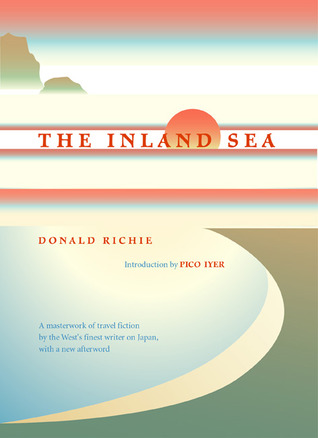
A travel classic. Richie's masterpiece, more than a travel account, is a memorable portrait of the island-studded Inland Sea as well as beautiful reflections on all things Japanese by one of its most acute observers. Richie was the best Western writer on Japan, detailing what it was like to have lived in Japan for more than sixty years.
Long considered a masterpiece of travel writing, Donald Richie's The Inland Sea is the journal-like record of a trip to the seafaring communities of central Japan. Aware of his foreignness, Richie delights in details and muses at length on food, romance, work, and human foibles.
This new edition of The Inland Sea contains an introduction by Pico Iyer, a new afterword by the author, a map, and 18 images from the award-winning Inland Sea documentary. Richie wrote The Inland Sea some thirty years ago, but its themes of travel and the Outsider still endure, while its view of a Japan now nearly lost is both sad and indelible.
Japan, A Traveler's Literary Companion — edited by Jeffrey Angles
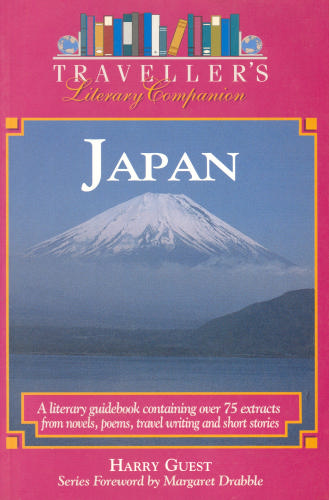
This geographically-organized anthology introduces both Japan and its best contemporary writers. This collection guides the reader through the complexity that is Japan. Although frequently misunderstood as a homogeneous nation, Japan is a land of tremendous linguistic, geographical, and cultural diversity. Hino Keizo leads the reader through Tokyo's mazes in "Jacob's Tokyo Ladder." Nakagami Kenji explores the ghostly, mythology-laden backwoods of Kumano.
The stories, like the country and the people, are beautiful and compelling. Let these literary masters be your guide — from the beauty of northern Honshu through the hustle and bustle of Tokyo, to the many temples in Kyoto, through Osaka and the coastline of the Sea of Japan, and down to southern Kushu — to a Japan that only the finest stories can reveal. Contributors include Hino Keizo, Maruya Saiichi, Inoue Yasushi, Oda Sakunosuke, Miyamoto Teru, Tada Chimako, Atoda Takashi, Nakagami Kenji, Mizukami Tsutomu, Kawabata Yasunari, Takahashi Mutsuo, and Shima Tsuyosh.
In Praise of Shadows — by Junichiro Tanizaki
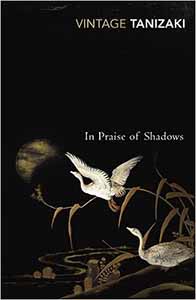
Recommended for those with interest in Japanese architecture and design. This is an essay on aesthetics by one of the greatest Japanese novelists. The essay ranges from architecture, jade, food, to toilets, and combines an acute sense of the use of space in buildings, as well as vivid descriptions of lacquerware under candlelight and women in the darkness of a house of pleasure. The essay forms a classic description of the collision between the shadows of traditional Japanese interiors and the dazzling light of the modern age.
Although Tanizaki can be dogmatic, generalizations aside, Tanizaki's analyses in this essay are daring, meticulously considered, timeless, and brimming with a nearly painful sensitivity. Arguably, it stands as the finest piece of writing on traditional Japanese designs ever written by a non-designer. His main thesis is that aestheticism was the driving force behind the Japanese ability to triumph over the limitations of their materials and circumstances. He finds profound fascination in minimalism, where all distractions were muted, allowing a select few essential elements to flourish in intensity and depth amidst the profound darkness of shades and shadows (the title of the essay). While recognizing the inevitable march of Western civilization and the accompanying material abundance, Tanizaki refrains from prescribing any concrete solutions. Instead, he reiterates his commitment to exploring the nuances of shadows and shades within his literary domain.
The Book of Tea — Kakuzo Okakura
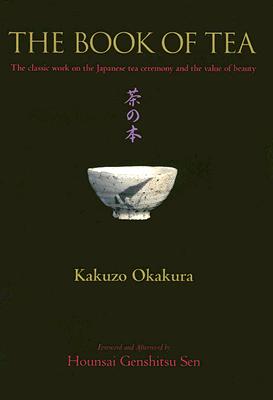
A graceful, witty meditation on Japanese aesthetics and culture as reflected through the tea ceremony. A celebrity and cultural ambassador, Okakura was a curator at Boston's Museum of Fine Arts.
Nothing is so quintessentially Japanese as the tea ceremony—more properly, "the way of tea"—with its austerity, its extravagantly minimalist stylization, and its concentration of extreme subtleties of meaning into the simplest of actions. The Book of Tea is something of a curiosity: written in English by a Japanese scholar (and issued here in bilingual form), it was first published in 1906. Clearly, behind the publication was an agenda, or at least a mission to explain. Around its account of the ceremony, The Book of Tea folds an explication of the philosophy, first Taoist, later Zen Buddhist, that informs its oblique celebration of simplicity and directness—what Okakura calls, in a telling phrase, "moral geometry." And the ceremony itself? Its greatest practitioners have always been philosophers, but also artists, connoisseurs, collectors, gardeners, calligraphers, gourmets, flower arrangers.
Eyewitness Travel JAPAN
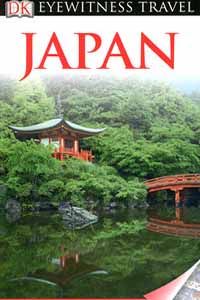
This brilliantly illustrated book with superb photography (over 800) is more souvenir than simply a practical guidebook. Highly visual, featuring fascinating three-dimensional and aerial diagrams and building cutaways, floor plans, and reconstructions of historic sights, any crisp street-by-street maps. The recently updated guide brings Japan to life, transporting you there like no other travel guide does with vivid photographs, detailed breakdowns of sights, visuals on practically every page, and hand-drawn illustrations which place you inside the country's iconic buildings and neighborhoods.
Includes coverage of Tokyo, Central Honshu, Kyoto City, Western Honshu, Shikoku, Kyushu, Okinawa, Northern Honshu, and Hokkaido. The guide that will long remain a reference to Japan after your return home.
Samurai Coloring Book — Boston Museum of Fine Arts
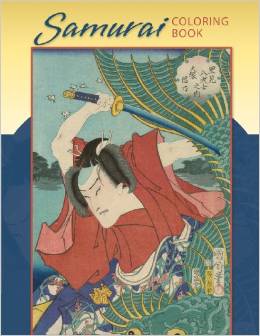
A wonderful book for children, with intricate designs. Pomegranate's Samurai coloring book features 22 illustrations from an epic Japanese adventure story. Coloring pages are blank on the back so they can be cut out and displayed. Published with the Museum of Fine Arts, Boston. One forty-eight page 8 1/2 x 11" book with twenty-two images to color. Each illustration is reproduced in a small, color version of the original artwork and as a full-page black line drawing.
One of the most popular writers in nineteenth-century Japan was Bakin, who lived from 1767 to 1848. His most famous book, The Tale of the Eight Dog Heroes of Satomi, or Satomi Hakkenden in Japanese, was published in 106 installments from 1814 to 1842. Fans waited eagerly for the publication of each new chapter of the exciting story, which tells of eight heroes, each with the word for 'dog' (in Japanese, inu) in his family name (in Japanese, the family name comes first, with the personal names after it). The eight heroes are as brave and loyal as faithful dogs. They use a combination of sword fighting, magic, and strategy to defeat the enemies of the Satomi clan, and after many adventures, they are finally successful.
 For a full list of Japan children's books see our Japan Family Travel Page
For a full list of Japan children's books see our Japan Family Travel Page
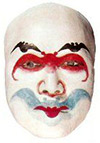
JAPANESE FILM
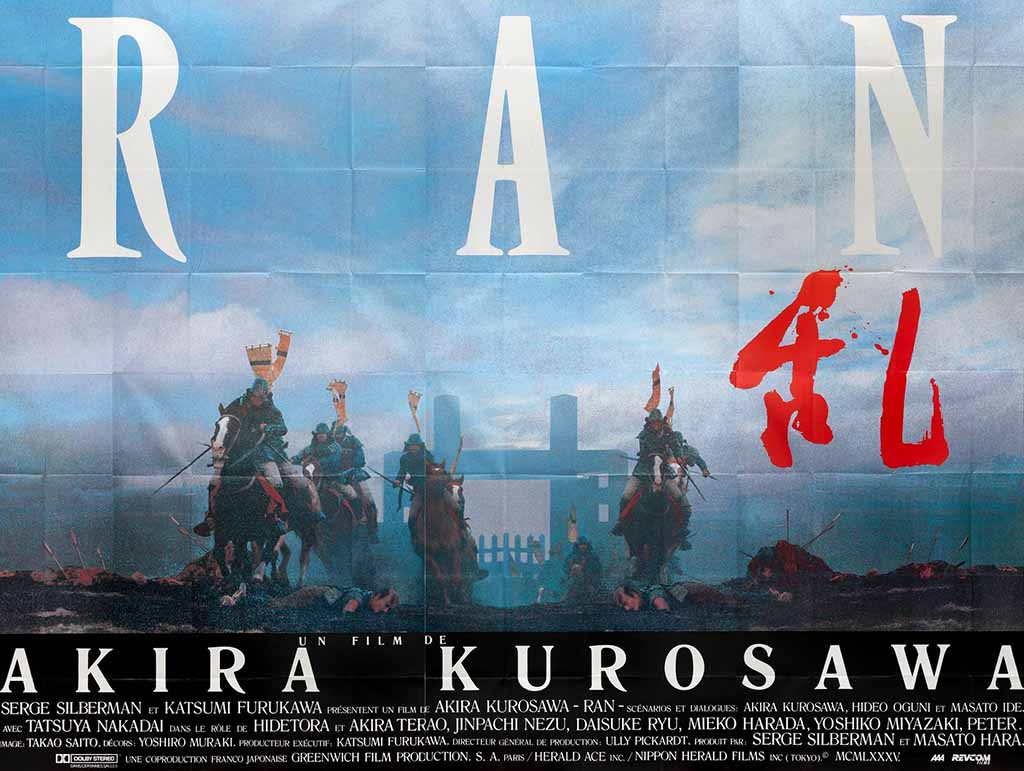
Akira Kurosawa, arguably the best director who ever lived, created such stunning masterpieces as Ran. Other famed Japanese filmclassics include Rashomon, Woman in the Dunes, High and Low, Harakiri, and The Seven Samurai. For children (and adults), Studio Ghibli produces the finest animated films ever made, including the wildly popular Oscar-winning Spirited Away. Studio Ghibli, which produced Spirited Away, has a park near Tokyo we can arrange to visit for children.
Japan Shows & Documentaries
SHOGUN (2024 - Hulu & Disney Plus)
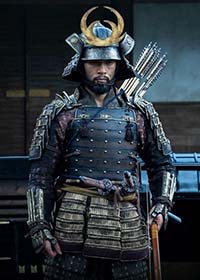
Shōgun (Hulu & Disney Plus) is an immensely-popular 10-part series and winner of 19 Emmy awards based on James Clavell’s bestselling 1975 novel of the same name. Set in Japan in the year 1600, at the dawn of a century-defining civil war. “Lord Yoshii Toranaga” (Hiroyuki Sanada) is fighting for his life as his enemies on the Council of Regents unite against him, when a mysterious European ship is found marooned in a nearby fishing village... Cunning warlords, ambitious young samurai, and warring, treacherous Europeans all feature in Shōgun. It's runaway success attributed to its similarity to Game of Thrones avoiding the tedium often present in sweeping historical dramas.
Plot: Shōgun follows John Blackthorne, an English pilot whose shipwreck in Japan thrusts him into the heart of its feudal power struggles. Blackthorne becomes entangled with the ambitious daimyo, Lord Toranaga, who seeks to consolidate power and outmaneuver his rivals in the midst of a civil war. The series explores cultural assimilation, as Blackthorne, initially a foreigner, gradually adapts to the ways of the samurai while his knowledge of Western warfare becomes a crucial asset in Toranaga's strategic ambitions. The role of Toda Mariko, a Christian noblewoman and translator, deepens the intrigue as she balances her loyalty to Toranaga and her faith, while helping Blackthorne navigate the political and cultural complexities of Japan.
Shōgun is a worthwhile watch before your visit to Japan for it rich portrayal of feudal Japan, featuring a predominantly Japanese cast. The series delves into political maneuvering, religious tensions, and personal sacrifices, particularly highlighting the importance of Mariko’s role. Her decisions shape the narrative’s direction, positioning her as a central figure in the clash between cultures and power structures. While the show excels in character-driven drama and historical setting, some episodes focus more on political intrigue than action, which may feel slow to some viewers but hang in there for it is a visually stunning and compelling exploration of a pivotal time in Japan's history. More seasons have been announced. [Shogun Trailer]
Age of Samurai - Battle for Japan (Netflix)
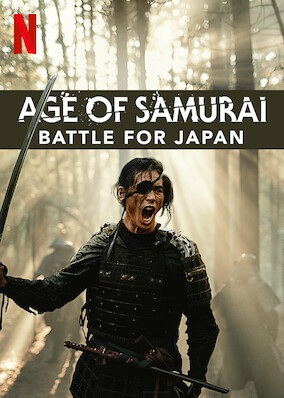
Age of Samurai: Battle for Japan (NETFLIX) is a six-part Netflix historical documentary series, retells the final decades of the Sengoku Jidai, a 150-year period of near continuous civil war. Seventeen historians speak on the show, examining the reunification of Japan through the rise of three figures: Oda Nobunaga, Toyotomi Hideyoshi, and Tokugawa Ieyasu. Beginning in 1551 with the death of Oda Nobuhide and the rise of his son, Oda Nobunaga, the show ends in 1616, with Tokugawa Ieyasu’s rise to power and the beginning of the Tokugawa Shogunate.
Covering a subject often among the most interesting to foreigners—samurai—during Japan’s feudal era (1185-1868), a period that has long become locked in Western imagination through media, film, and books, with each reconfiguration inspiring another such as the movie The Magnificent Seven. The show has been criticized for lack of historical accuracy, Western-centric optics, and gratuitous violence, yet remains an engaging series if only as an introduction.
The Makanai (Netflix)
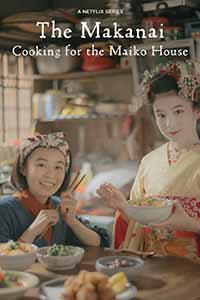
The Makanai (Netflix) A wholesome and positive show for all ages about lifelong friends from a rural region coming of age during one year in Kyoto. Kyoto, of course, is home to many districts where young women work as geisha: entertainers who perform traditional songs and dance. Kiyo Nozuki is a teenager living in a small manor where a group of maiko apprentice geisha reside. She has always admired the geisha and originally moved to Kyoto in hopes of becoming a maiko. However, Kiyo discovers that she is not cut out for the job. Not letting it upset her too much, she decides to help her troupe using her strongest suit instead become a caterer and cook them delicious meals to support them in their everyday lives.
An engaging window into a unique Japanese tradition of maiko and everyday life. Bonus of focus on food and cooking all filmed with beautiful cinematography.
Sing, Dance, Act: Kabuki (Netflix)

Sing, Dance, Act: Kabuki featuring Toma Ikutai (Netflix) Kabuki as an art form is demanding, requiring practitioners to possess a high standard of skill in singing, dancing and acting, in addition to knowing when and how to exit the stage. Actor Toma Ikuta’s foray into this new art form is chronicled in Sing, Dance, Act: Kabuki, a Netflix documentary produced to show the world exactly what kabuki is. Ikuta is featured as a guest star on his close friend and kabuki actor Matsuya Onoe’s new production of a kabuki stage series. Ikuta learns the ropes of the famously complicated kabuki performances by starting from the very bottom. The side story is about their friendship since high school, where they promised each other that they would stand on the same stage some day. Ikuta’s venture into kabuki is also partly inspired by Onoe’s late father, who was once a prominent kabuki actor.
A delightful story, but also a fascinating look into look into the beauty and power of Kabuki theater and the particular sets of skills that are required to pull off such idiosyncratic performances.
Samurai Gourmet (Netflix)
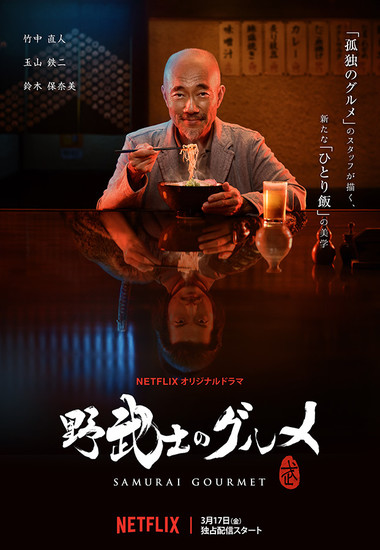
Samurai Gourmet (Netflix) is a humorous oddball show yet an engaging dive into Japanese culture and mentality. In Masayuki Kusumi’s miniseries, the recently retired salaryman Takeshi Kasumi plays a gentle 60-year-old protagonist who is troubled by his suddenly free time. He decides to explore Tokyo on foot alone, eating something new in a different diner every day. Whenever challenged by a new experience, an imaginary wandering samurai appears – Kasumi’s idealized self – to guide his way. When he is too embarrassed to drink a beer with lunch, for example, the samurai swaggers into the restaurant and demolishes a bottle of sake. Emboldened, Kasumi then orders two beers.
On his whimisical journeys of self-discovery he finds unfamiliar inner strength in the face of uncertainty and lets go of the pressures and worries of his former life, eating and doing whatever he wants—a reality many Japanese can only dream of. Each 20-minute episode is a soothing lesson in optimism. In one he swoons over a takeaway bento box as his neighbor asks, “Is it really that good?” He thinks: “It’s just a plain lunch, but eating it under a clear sky makes it special.” The Guardian
Midnight Diner - Tokyo Stories (Netflix)

Shinya Shokudo (Netflix) or “Restaurant at Midnight” is a 2009 TV show about a tiny restaurant in a busy part of Tokyo that’s only open while most people are asleep. “When people finish their day and hurry home,” the restaurant’s chef, known only as “the Master,” explains, “my day starts.” His menu is minimal—usually just pork-and-vegetable noodle soup, beer, and sake. But most of his regulars, who are restless, lonely, or looking for a quiet place to take the edge off a long day, come for the company.
The Master—soulful and stoic, with a mysterious scar across his face—welcomes them all. Every episode involves a story based on the dreams, wants, hopes or fears of a regular patron of the diner. He is an exceptional listener, and he’ll cook whatever you want, so long as you supply the ingredients. It's a Japanese show in its slow, meditative rhythms the simple pleasure captured watching the people eating with strangers, and swapping stories, in a small room full of others who can be alone together. It is set in Tokyo in modern times. (New Yorker). Six seasons.
